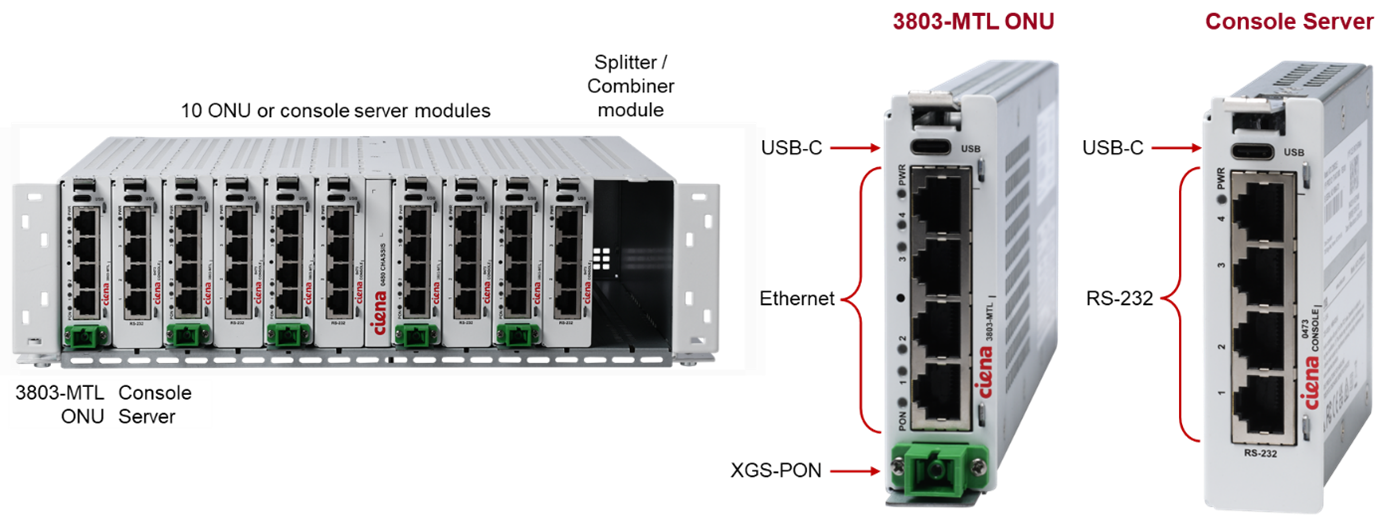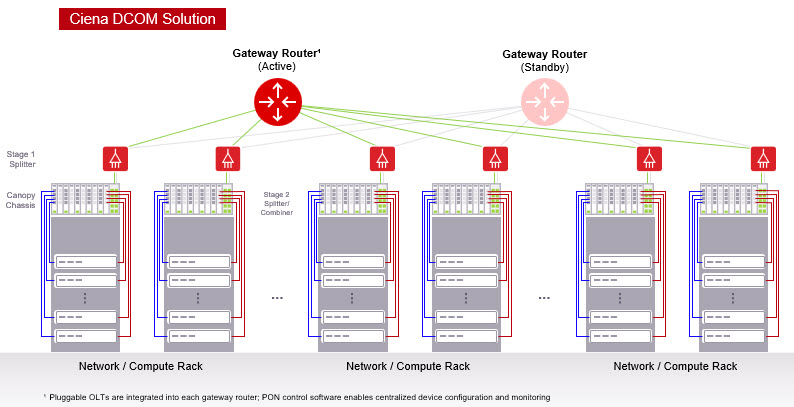Overcoming challenges in out-of-band management is critical as data centers grow in scale and complexity. Mark Bieberich explains how Ciena’s data center out-of-band management (DCOM) solution simplifies operations, improves scalability, and reduces space and power with a breakthrough network design.
From high-bandwidth AI fabrics and 800G Ethernet to open networking and co-packaged optics, the conversation around data center networking today is dominated by high-velocity innovation. These technologies are reshaping what’s possible at scale — enabling breakthroughs in artificial intelligence, cloud service delivery, and edge computing.
But while these topics capture headlines and investor interest, there’s another layer of infrastructure quietly underpinning the resilience and operability of every data center: the out-of-band (OOB) management network.
Rarely in the spotlight, OOB networks are nonetheless essential for day-to-day operations, disaster recovery, initial device bootstrapping, remote troubleshooting, and secure lifecycle management — especially in hyperscale, colocation, and enterprise environments with distributed infrastructure. As data center networks grow more complex and critical, the importance of robust, scalable OOB management only increases.
At NANOG 94, Meta presented an innovative new approach to addressing the growing complexity of out-of-band management networks. The solution, developed in close collaboration with Ciena, reflects a shared vision for simplifying and modernizing OOB infrastructure at scale.
Let’s take a closer look.
Out-of-band management meets modern data center reality
As demand for AI and cloud services accelerates, data center networks are scaling at unprecedented rates. But alongside the push for faster fabrics and denser compute, the often-overlooked infrastructure for OOB management is facing mounting challenges — many of which are becoming harder to ignore. These challenges include the following:
Operational complexity
Modern data centers can house thousands of devices requiring OOB connectivity — including switches, routers, and console servers. Managing this vast sprawl introduces considerable complexity. Engineers must navigate provisioning, configuration, and monitoring across a parallel management plane that’s critical for control and recovery — yet often lacks the same tooling and automation maturity as the production network.
Rack space constraints
The explosive growth of AI workloads is driving a race to maximize GPU density in every rack. This leaves minimal physical space for OOB infrastructure. Console servers and aggregation switches must now compete with high-value compute resources for every RU, forcing operators to rethink how and where OOB capabilities are deployed.
Copper cable overload
OOB networks have historically relied on extensive copper Ethernet infrastructure to aggregate cabinet-level traffic. In high-density environments, the sheer volume of copper cabling becomes a liability: it’s bulky, difficult to manage, and introduces airflow and maintenance challenges. For operators scaling out rapidly, copper sprawl slows down builds and increases the likelihood of physical-layer failures.
Power and cooling pressures
With power and thermal budgets already under strain from AI clusters, every watt consumed by support infrastructure matters. Traditional OOB hardware — often built with general-purpose processors and legacy architectures — contributes to the overall power footprint without directly supporting revenue-generating workloads. This dynamic is pushing operators to seek leaner, more efficient OOB solutions that align with modern sustainability and performance goals.
Reimagining out-of-band: A simpler, smarter approach
Meeting the challenges of modern out-of-band management requires a fundamental rethink of how OOB networks are architected. At Ciena, we’ve done just that.
Our data center out-of-band management (DCOM) solution is a purpose-built approach to simplify and modernize OOB infrastructure — replacing the legacy model of dedicated Ethernet aggregation with a more elegant, efficient, and scalable alternative based on Passive Optical Network (PON) technology.
Developed to meet the needs of the most demanding data center networks, Ciena’s DCOM solution leverages a combination of:
- Scalable routing platforms with pluggable optical line terminals (OLTs) in a highly dense footprint
- Powerful PON control software, implemented on the host routers, that automates provisioning and simplifies lifecycle management
- An innovative canopy chassis design that integrates optical network units (ONUs), console servers, and passive optical splitters — with “canopy” referring to its installation on top of the rack, freeing space otherwise needed for network or compute nodes

All ONU configuration, monitoring, and diagnostics are handled via the OMCI protocol, embedded in the PON control software on the pluggable OLTs on host routers. This centralization of control further simplifies operations by consolidating OOB management functions onto a relatively small number of routing platforms, reducing the operational footprint and enabling streamlined, large-scale deployments.
This architecture delivers breakthrough operational simplicity by consolidating the OOB network fabric, dramatically reducing the number of network elements required, and eliminating traditional Ethernet switching in the aggregation layer. The result: a leaner, more agile management network that is significantly easier — and less costly — to build, scale, and operate.
By dramatically reducing the number of active network elements and eliminating the need for traditional Ethernet aggregation switches, Ciena’s DCOM solution lowers the power and cooling footprint of the OOB network. At the same time, replacing massive volumes of copper cabling with lightweight fiber simplifies physical infrastructure, improves airflow within the rack, and supports more scalable, cleaner builds in high-density environments.


These benefits are explored in greater detail in a co-authored white paper by Ciena and Meta, which outlines how this PON-based architecture delivers transformative gains in scalability, operational simplicity, and cost reduction.
Strengthening the foundation of modern data centers
While much of the industry’s focus rightfully centers on emerging data center technologies — from AI fabrics to high-speed interconnects — the role of out-of-band management remains quietly essential. It's the infrastructure that enables control, recovery, and remote operations when the unexpected occurs, and it forms a critical safety net for complex, distributed environments.
As data centers scale to support more compute, higher density, and faster innovation cycles, having an OOB network that can keep pace is more important than ever. Ciena’s DCOM solution is purpose-built for this moment — offering a simpler, more efficient approach to out-of-band management that aligns with the realities of modern infrastructure design.
By reducing complexity, minimizing physical overhead, and improving operational efficiency, DCOM helps strengthen the foundation beneath high-performance data centers — enabling operators to focus on delivering the innovation their business demands.
To learn how Ciena’s DCOM solution is helping leading operators modernize their OOB infrastructure, read this white paper or connect with our team.






